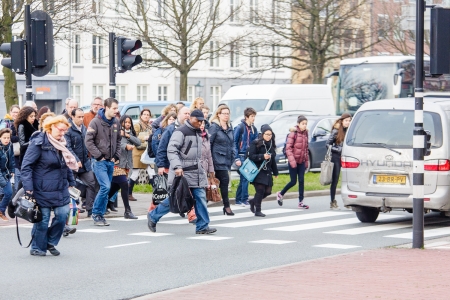Below you will find the list of references that are used in this fact sheet. All sources used can be consulted or retrieved via our Library portal. Here you can also find more literature on this subject
[1]. SWOV (2020). Passenger kilometers CBS/OVIN adjusted for holiday traffic. . SWOV Facts and figures, Safety figures, Risk, the Hague. Retrieved on 3-08-2020 at https://theseus.swov.nl/single/?appid=01d55f13-2ae6-4c76-a4fe-c9f9051875cb&sheet=3062679e-9623-456e-a7b6-480ad73792a8&opt=currsel%2Cctxmenu.
[2]. Methorst, R., Essen, M. van, Ormel, W. & Schepers, P. (2010). Letselongevallen van voetgangers en fietsers. Een verrassend beeld!. Rijkswaterstaat, Delft.
[3]. Schepers, J.P. & Methorst, R. (2020). Voetgangersveiligheid. Verkenning van onveiligheid, oorzaken en beleidsmogelijkheden [Pedestrian safety. Exploration of the level of unsafety, its causes and policy options]. R-2020-4 [Summary in English]. SWOV, Den Haag.
[4]. Davidse, R.J. (2007). Assisting the older driver: Intersection design and in-car devices to improve the safety of the older driver. SWOV-Dissertatiereeks. Proefschrift Rijksuniversiteit Groningen RUG, Groningen.
[5]. Kuiken, M.J. & Spapé, I. (2006). Over oversteken. Theorie en aanknopingspunten voor een actieprogramma voor kwetsbare verkeersdeelnemers gericht op oversteken. Rijkswaterstaat Dienst Verkeer en Scheepvaart, Rotterdam.
[6]. Fisher, P. (2015). Everyone walks. Understanding & addressing pedestrian safety. Governors Highway Safety Association, Washington.
[7]. Elvik, R., Høye, A., Vaa, T. & Sørensen, M. (2009). The handbook of road safety measures. Second edition. Emerald, UK.
[8]. Elvik, R. (1995). Meta-analysis of evaluations of public lighting as accident counter measure. In: Transportation Research Record, vol. 1485, p. 112-123.
[9]. Wanvik, P.O. (2009). Effects of road lighting: An analysis based on Dutch accident statistics 1987-2006. In: Accident Analysis & Prevention, vol. 41, nr. 1, p. 123-128.
[10]. Brouwer, W.H. & Davidse, R.J. (2002). Oudere verkeersdeelnemers. In: Schroots, J.J.F. (red.), Handboek psychologie van de volwassen ontwikkeling en veroudering. Van Grocum, Assen, p. 505-531.
[11]. Oxley, J., Corben, B., Fildes, B., O'Hare, M., et al. (2004). Older vulnerable road users. Measures to reduce crash and injury risk. MUARC Report No. 218. Monash University Accident Research Centre MUARC, Clayton, Australia.
[12]. Aarts, L.T. & Dijkstra, A. (2018). Achtergronden en uitwerking van de verkeersveiligheidsvisie. De visie Duurzaam Veilig Wegverkeer voor de periode 2018 – 2030 onderbouwd [Sustainable Safety version 3 – Backgrounds and elaboration of the updated road safety vision. Substantiation of the second advanced Sustainable Safety vision for the period 2018-2030]. R-2018-6B [Summary in English] SWOV, Den Haag.
[13]. Rosén, E., Stigson, H. & Sander, U. (2011). Literature review of pedestrian fatality risk as a function of car impact speed. In: Accident Analysis & Prevention, vol. 43, nr. 1, p. 25-33.
[14]. Temürhan, M. (2016). Berekening risicotoename bij overschrijding van de snelheidslimiet [Calculating the increase in fatality risk when exceeding the speed limit]. R-2016-19. [Summary in English]. SWOV, Den Haag.
[15]. Retting, R.A., Ferguson, S.A. & Hakkert, A.S. (2003). Effects of red light cameras on violations and crashes: a review of the international literature. In: Traffic Injury Prevention, vol. 4, nr. 1, p. 17-23.
[16]. CROW (2006). Veilig oversteken? Vanzelfsprekend! Publicatie 226. CROW, Ede.
[17]. Dijkstra, A. (2000). Veiligheidsaspecten van verkeersvoorzieningen in stedelijke gebieden [Safety aspects of traffic facilities in urban areas]. R-2000-5. [Summary in English]. SWOV, Leidschendam.
[18]. Ward, H., Cave, J., Morrison, A., Allsop, R., et al. (1994). Pedestrian activity and accident risk. AA Foundation for Road Safety Research, Basingstoke, Hampshire.
[19]. Zegeer, C.V., Richard, S.J., Huang, H. & Lagerwey, P. (2001). Safety effects of marked versus unmarked crosswalks at uncontrolled locations: Analysis of pedestrian crashes in 30 cities. In: Transportation Research Record, vol. 1773, nr. 1, p. 56-68.
[20]. Fu, T., Miranda-Moreno, L. & Saunier, N. (2018). A novel framework to evaluate pedestrian safety at non-signalized locations. In: Accident Analysis & Prevention, vol. 111, p. 23-33.
[21]. Pulugurtha, S.S., Vasudevan, V., Nambisan, S.S. & Dangeti, M.R. (2012). Evaluating effectiveness of infrastructure-based countermeasures for pedestrian safety. In: Transportation Research Record, vol. 2299, nr. 1, p. 100-109.
[22]. Langen, A.C.B. de (2003). Veiligheid van enkele typen oversteekvoorzieningen in stedelijke gebieden. Analyse van ongevallengegevens en gedragswaarnemingen [The safety of various types of urban crossing facilities. Accident analysis and behaviour observations].. R-2003-23.[Summary in English]. SWOV, Leidschendam.
[23]. Hamilton-Baillie, B. (2008). Shared Space. Final evaluation and results. Keuninginstituut, Provincie Friesland, Leeuwarden.
[24]. Rijk, A. (2008). Verkeersveiligheid van kinderen. Een ongevallenanalyse en literatuurstudie [The road safety of children. A crash analysis and literature study]. R-2008-6. [Summary in English]. SWOV, Leidschendam.
[25]. Jager, D. de, Torenstra, J., Haas, J. de & Spapé, I. (2006). Veilige kindcorridor in steden; Kindlint zet dit jaar eerste stapjes in Amsterdam en Delft. In: Verkeerskunde, vol. 57, nr. 4, p. 34-39.
[26]. Godefrooij, H., Hal, E. van & Temme, R. (2005). Fietsers in voetgangersgebieden. Feiten en richtlijnen. Publicatienummer 8. Fietsberaad, Ede.
[27]. FGSV (2010). Empfehlungen für Radverkehrsanlagen ERA. Forschungsgesellschaft für Straßen- und Verkehrswesen FGSV, Köln.
[28]. ETSC (2001). Priorities for EU motor vehicle safety design. European Transport Safety Council ETSC, Brussel.
[29]. Kampen, L.T.B. van & Schoon, C.C. (1999). De veiligheid van vrachtauto's. Een ongevals- en maatregelenanalyse in opdracht van Transport en Logistiek Nederland [The safety of lorries. An accident and measures analysis commissioned by the Dutch Transport Operators Association]. R-99-31. [Summary in English]. SWOV, Leidschendam.
[30]. Verkeersnet (2013). Verkeersbrigadiers naar VVN. Verkeersnet. Retrieved on 28-11-2019 at https://www.verkeersnet.nl/verkeerseducatie/10055/verkeersbrigadiers-vvn/.
[31]. Wegman, F. & Aarts, L. (2005). Denkend over Duurzaam Veilig. SWOV, Leidschendam.
[32]. Hoekstra, A.T.G. & Mesken, J. (2010). De rol van ouders bij informele verkeerseducatie. Vragenlijststudie naar kennis, behoeften en motieven van ouders [The role of parents in informal traffic education. Questionnaire study of parents' knowledge, needs and motivation]. R-2010-31. [Summary in English]. SWOV, Leidschendam.

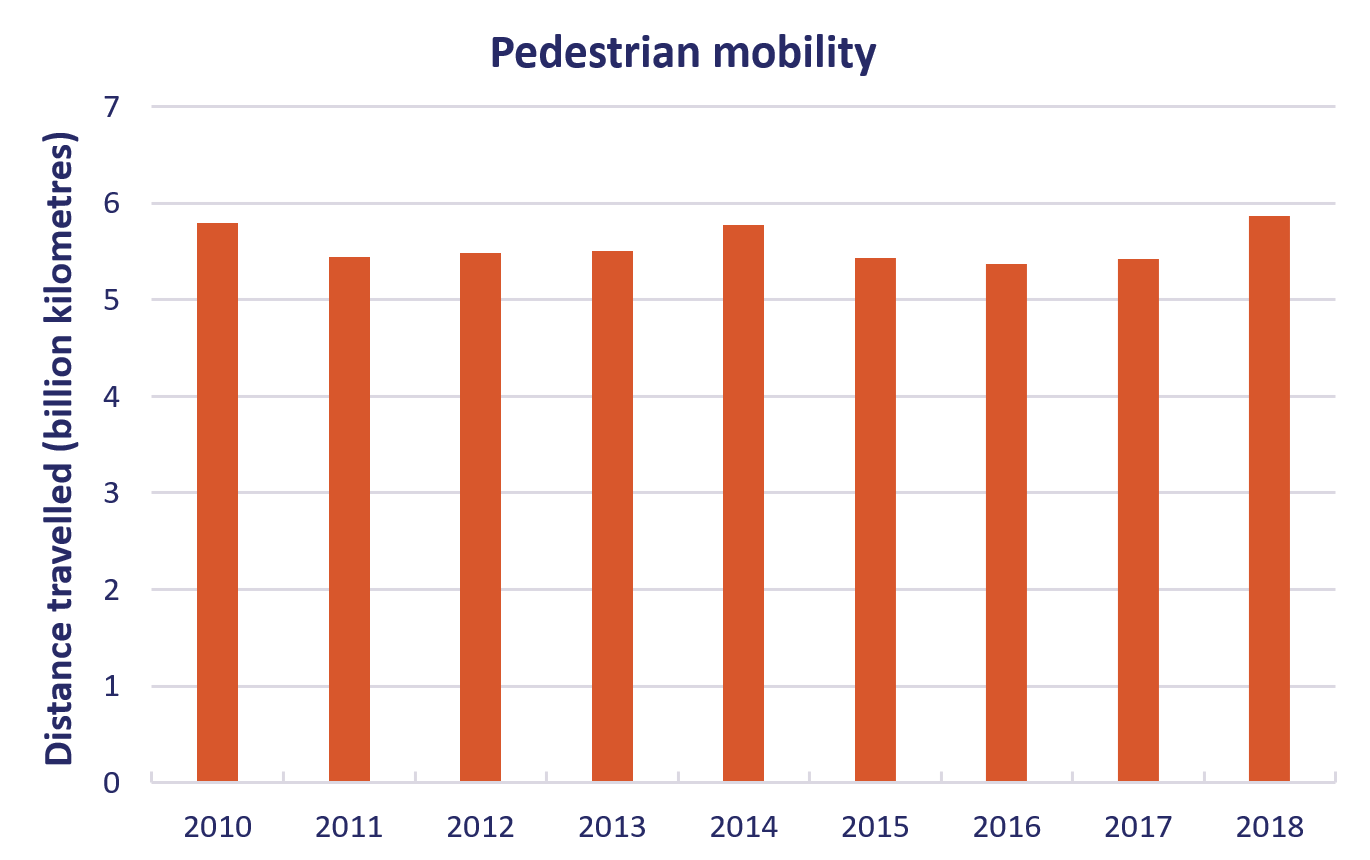 Figure 1. Distance travelled by pedestrians in 2010-2018 (source: Statistics Netherlands, OVIV/ODiN data (2018), edited by SWOV, including an estimate of holiday traffic and an addition of child data (2018)
Figure 1. Distance travelled by pedestrians in 2010-2018 (source: Statistics Netherlands, OVIV/ODiN data (2018), edited by SWOV, including an estimate of holiday traffic and an addition of child data (2018) 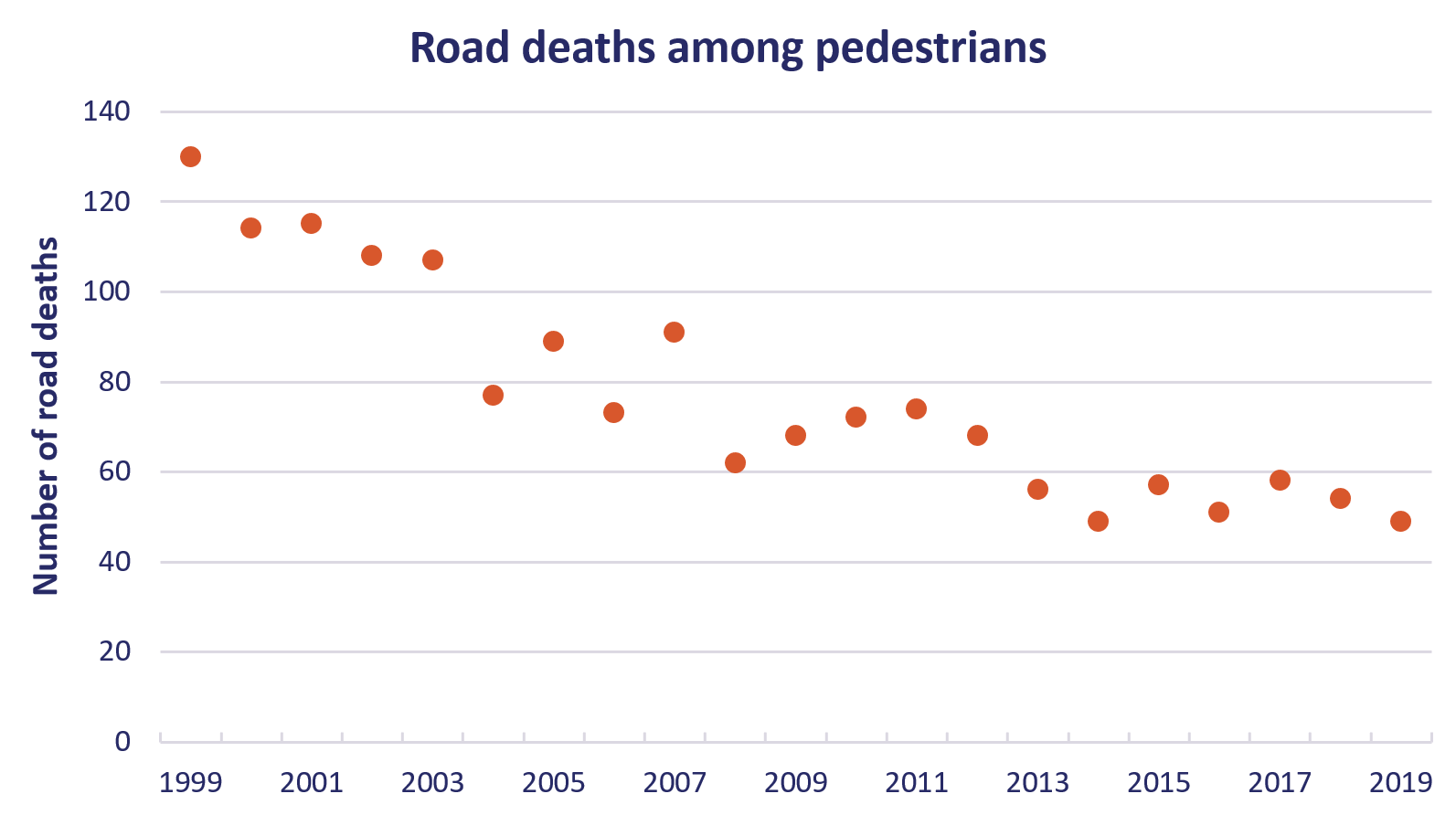 Figure 2. Number of pedestrian road deaths in 1999-2019 (source: Statistics Netherlands
Figure 2. Number of pedestrian road deaths in 1999-2019 (source: Statistics Netherlands 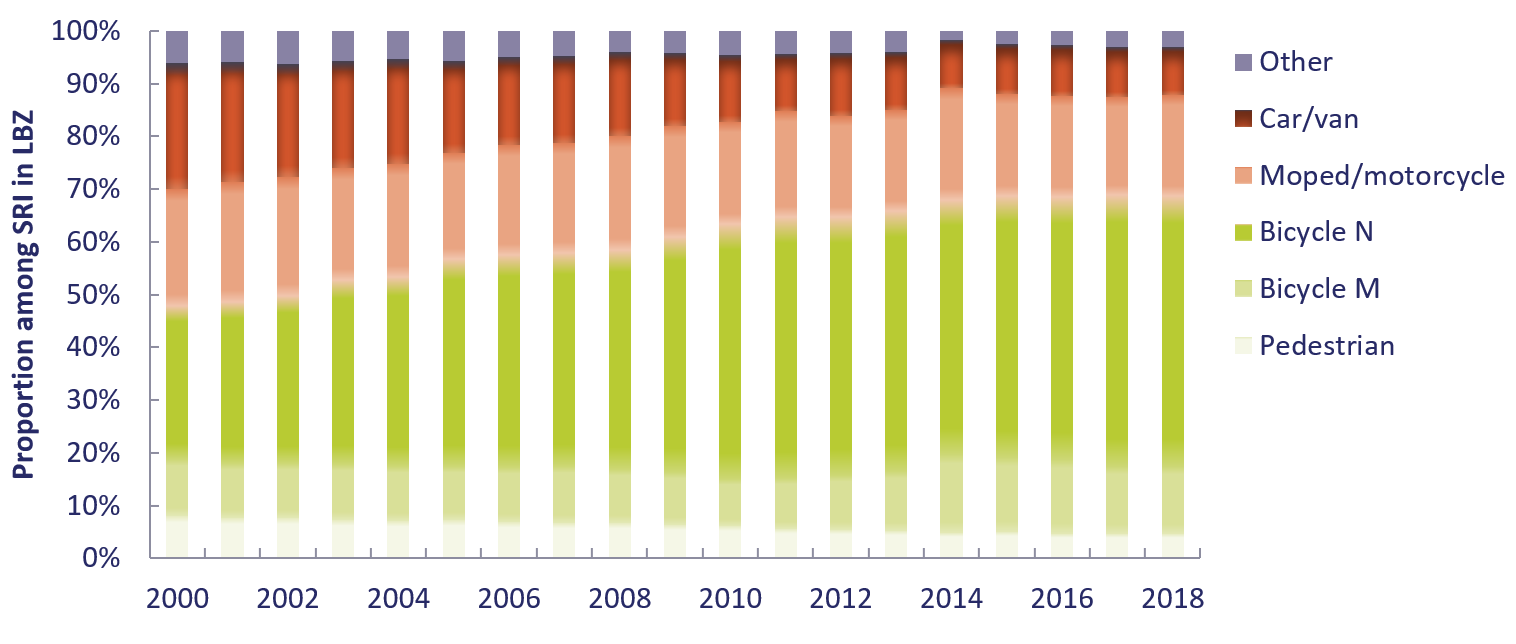 Figure 3. Distribution of serious road injuries in the Netherlands in 2000-2018 by mode of transport, based on the National Hospital Registration, a database managed by Dutch Hospital Data (DHD). For bicycle crashes, a distinction was made between crashes involving a motor vehicle (M) or not involving (N) a motor vehicle. This distinction may not be entirely accurate, since mode of transport is not always accurately registered in the National Hospital Registration (source: DHD en SWOV).
Figure 3. Distribution of serious road injuries in the Netherlands in 2000-2018 by mode of transport, based on the National Hospital Registration, a database managed by Dutch Hospital Data (DHD). For bicycle crashes, a distinction was made between crashes involving a motor vehicle (M) or not involving (N) a motor vehicle. This distinction may not be entirely accurate, since mode of transport is not always accurately registered in the National Hospital Registration (source: DHD en SWOV).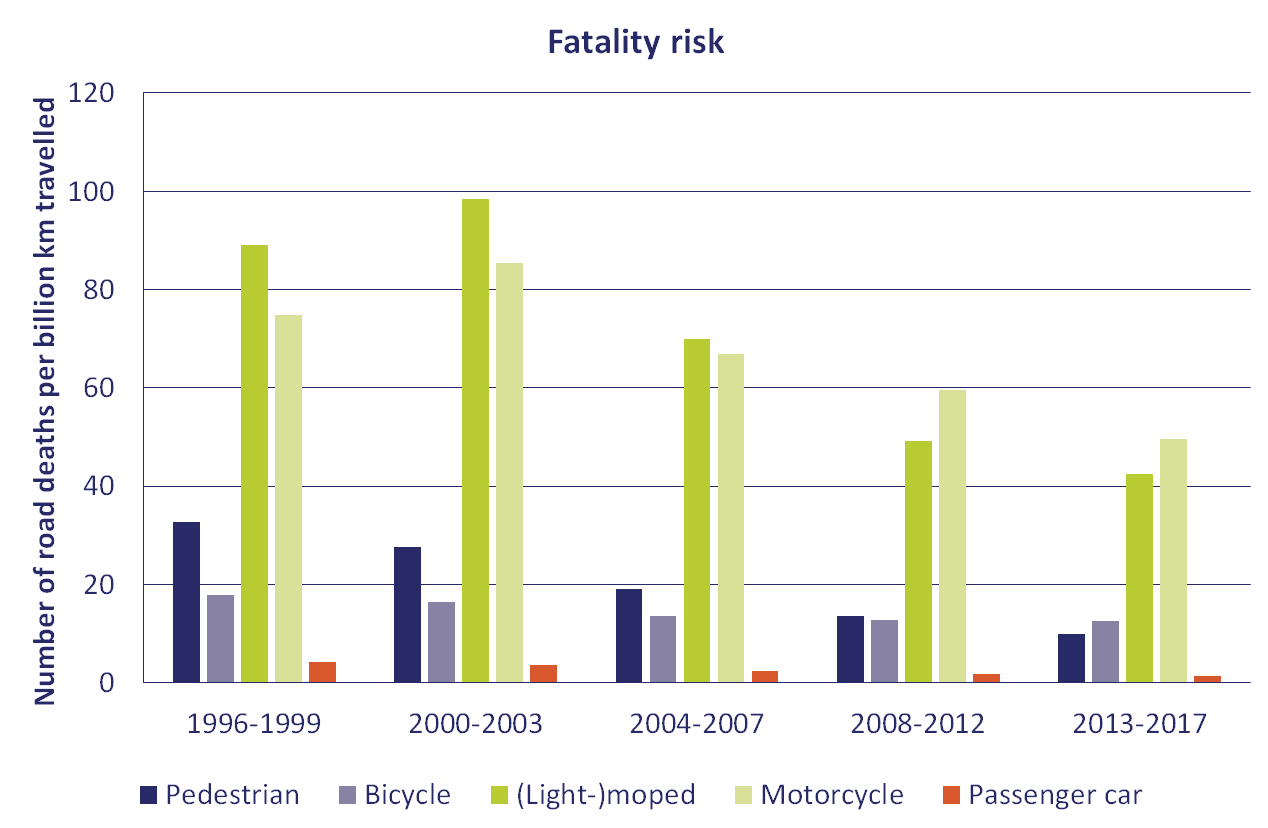 Figure 4. Fatality rate (number of road deaths per distance travelled) in the Netherlands for five different modes of transport, averaged over five-year periods (sources: Statistics Netherlands, Ministry of Infrastructure and Water Management (IenW), edited by SWOV).
Figure 4. Fatality rate (number of road deaths per distance travelled) in the Netherlands for five different modes of transport, averaged over five-year periods (sources: Statistics Netherlands, Ministry of Infrastructure and Water Management (IenW), edited by SWOV).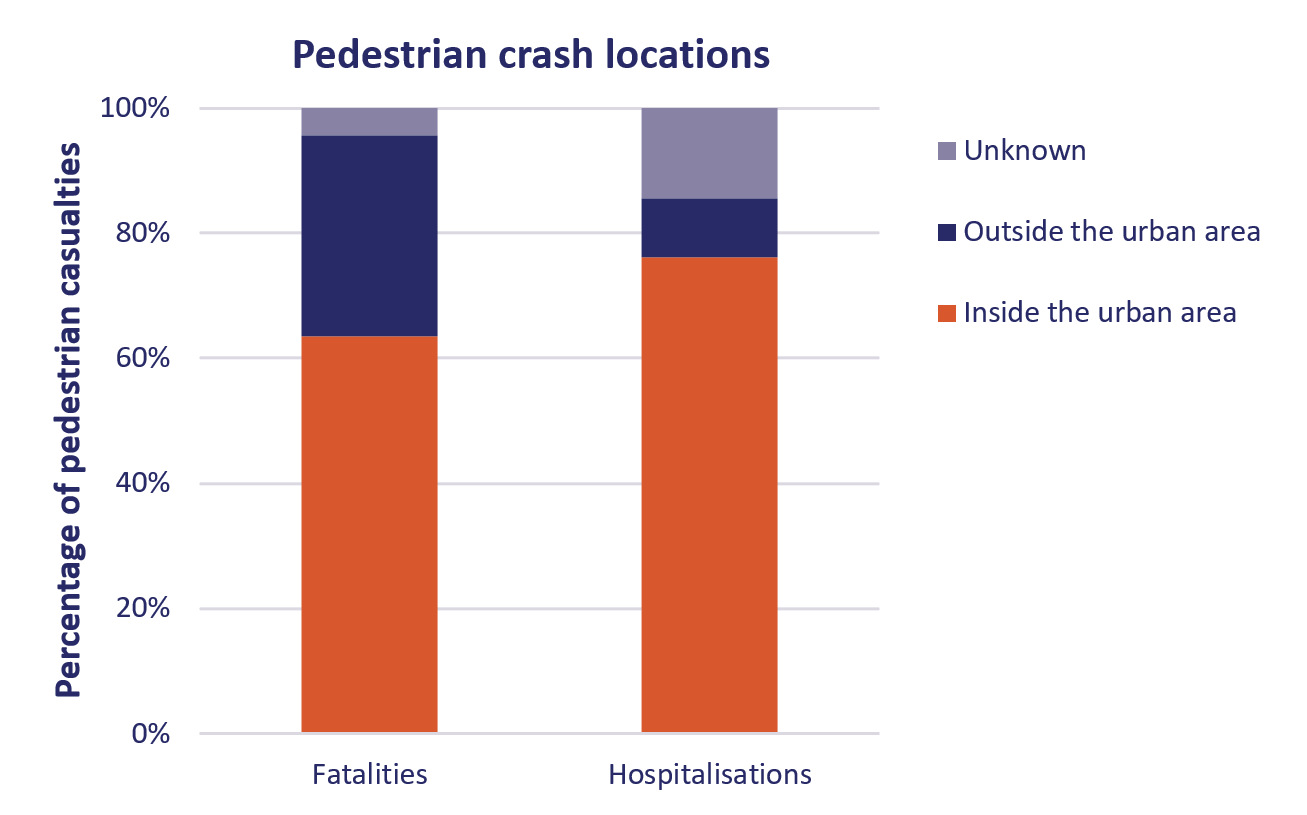 Figure 5. Distribution of pedestrian fatalities and serious injuries, inside or outside the urban area, average percentages in 2009-2018 (source: Statistics Netherlands, SWOV).
Figure 5. Distribution of pedestrian fatalities and serious injuries, inside or outside the urban area, average percentages in 2009-2018 (source: Statistics Netherlands, SWOV).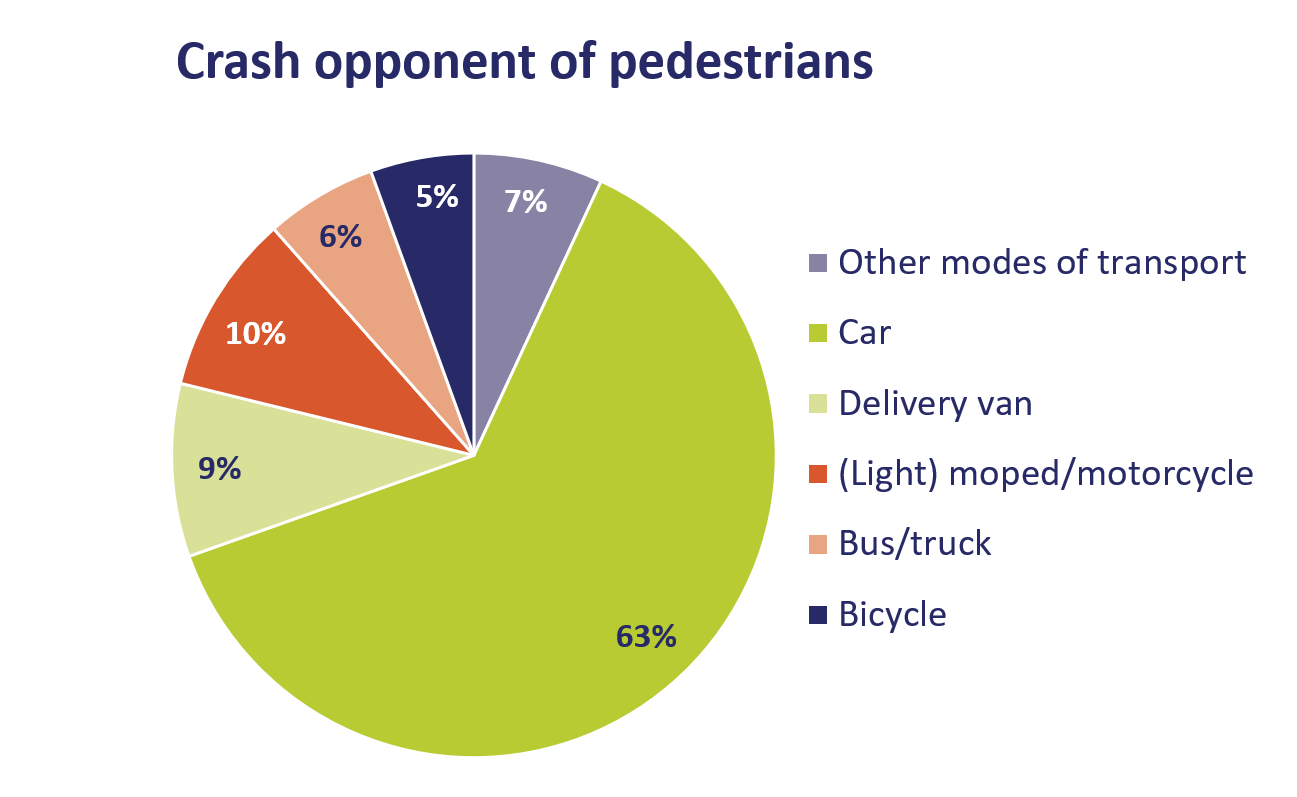 Figure 6. Distribution of killed or seriously injured pedestrians according to crash opponent, average percentages in 2009-2018 (source: Statistics Netherlands, SWOV).
Figure 6. Distribution of killed or seriously injured pedestrians according to crash opponent, average percentages in 2009-2018 (source: Statistics Netherlands, SWOV).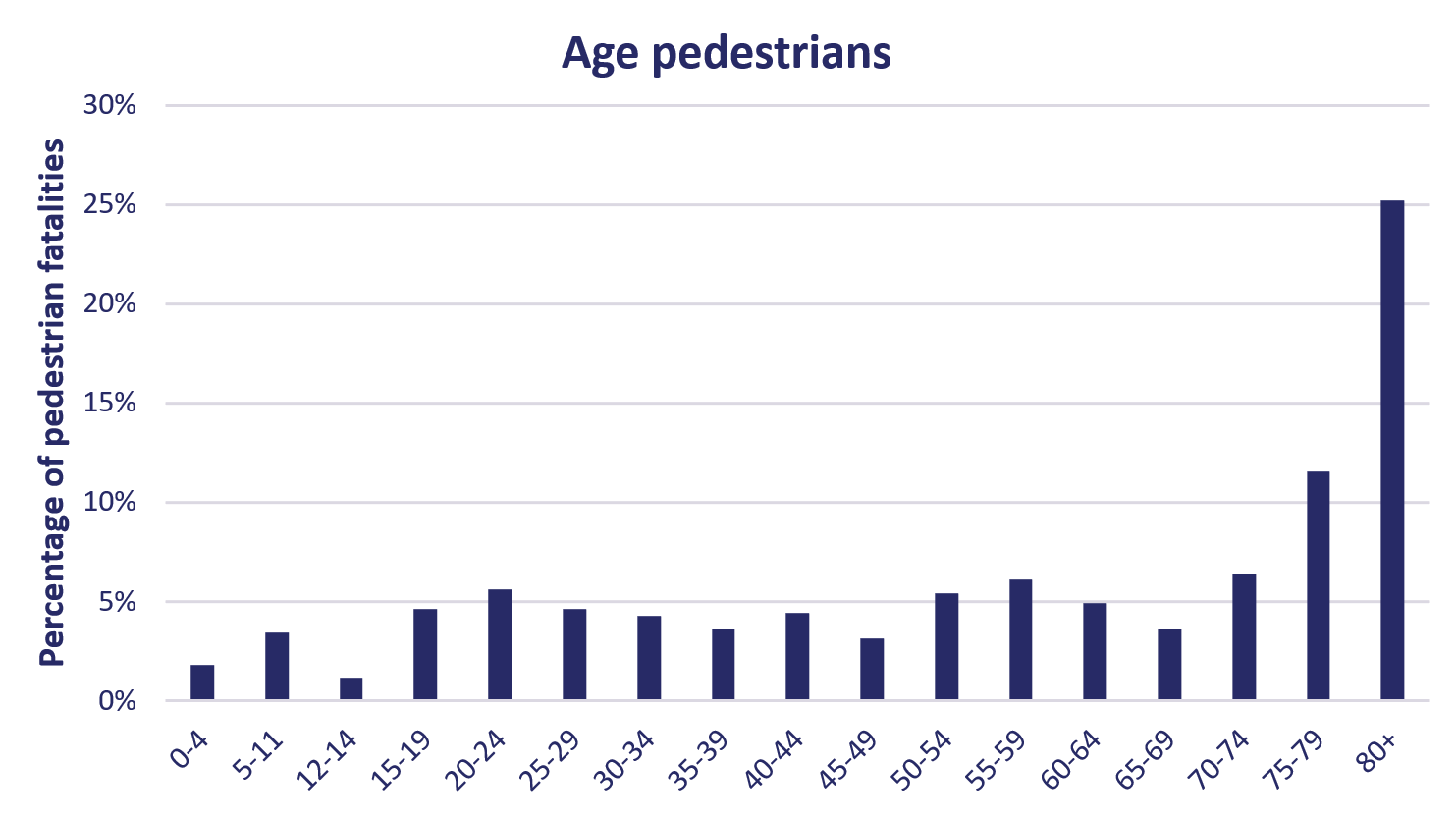 Figure 7. Distribution of pedestrian fatalities according to age group in 2009-2018 (source: Ministry of Infrastructure and Water Management (IenW - BRON).
Figure 7. Distribution of pedestrian fatalities according to age group in 2009-2018 (source: Ministry of Infrastructure and Water Management (IenW - BRON).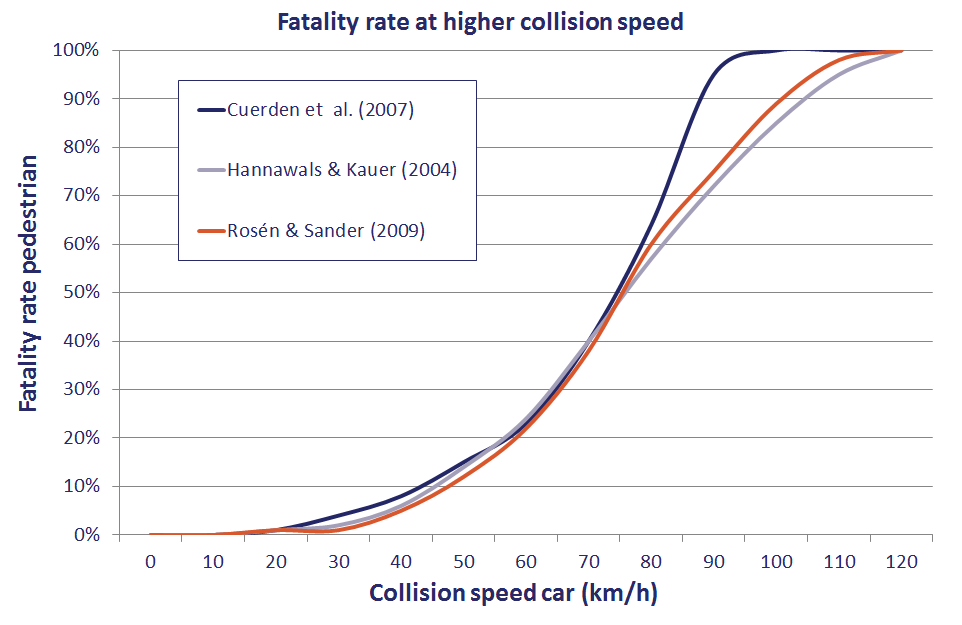 Figure 8. The correlation between collision speed and pedestrian fatality rate in a crash involving a car (source:
Figure 8. The correlation between collision speed and pedestrian fatality rate in a crash involving a car (source: 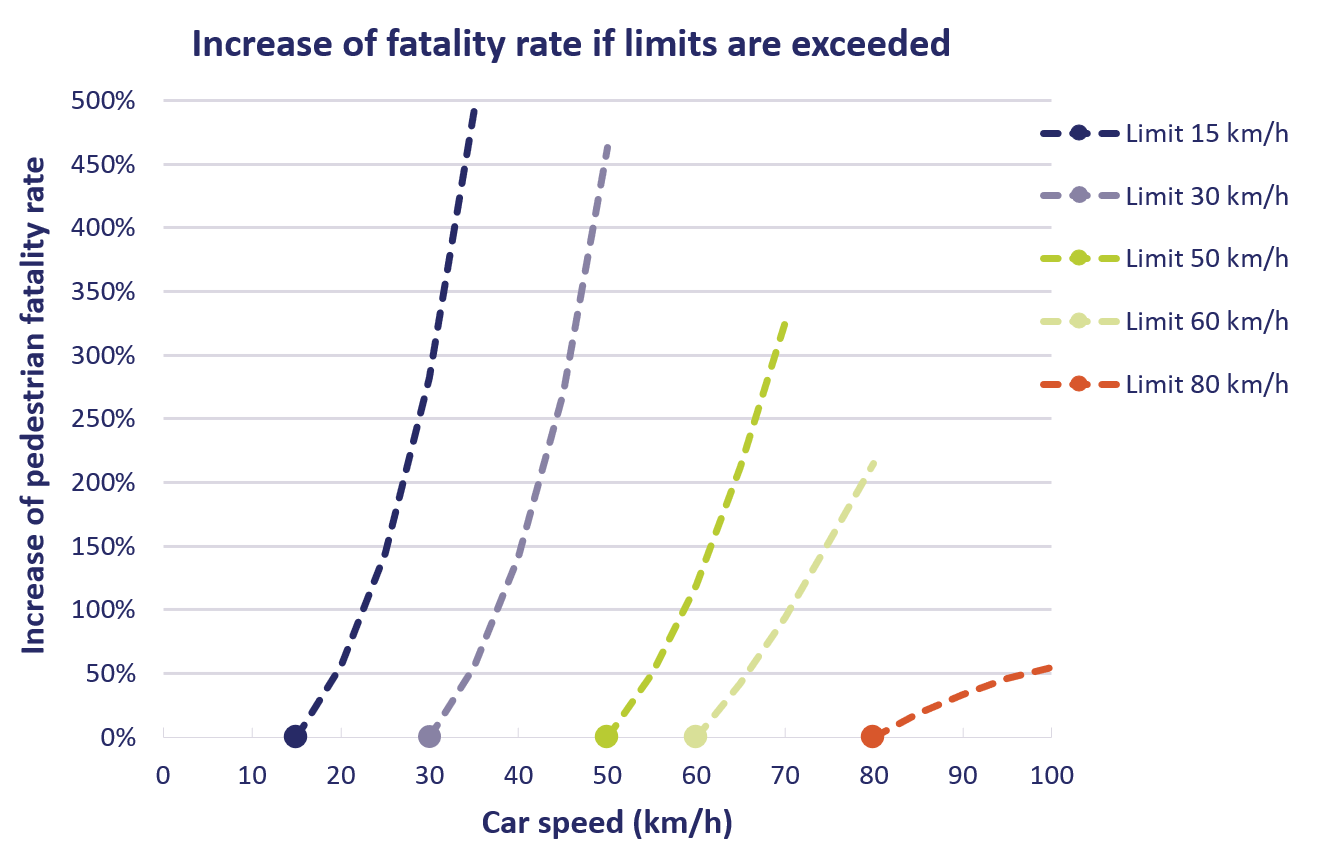 Figure 9. In a collision between a car and pedestrian: increase of pedestrian fatality rate compared to the fatality rate when speed limits are complied with (source:
Figure 9. In a collision between a car and pedestrian: increase of pedestrian fatality rate compared to the fatality rate when speed limits are complied with (source: 